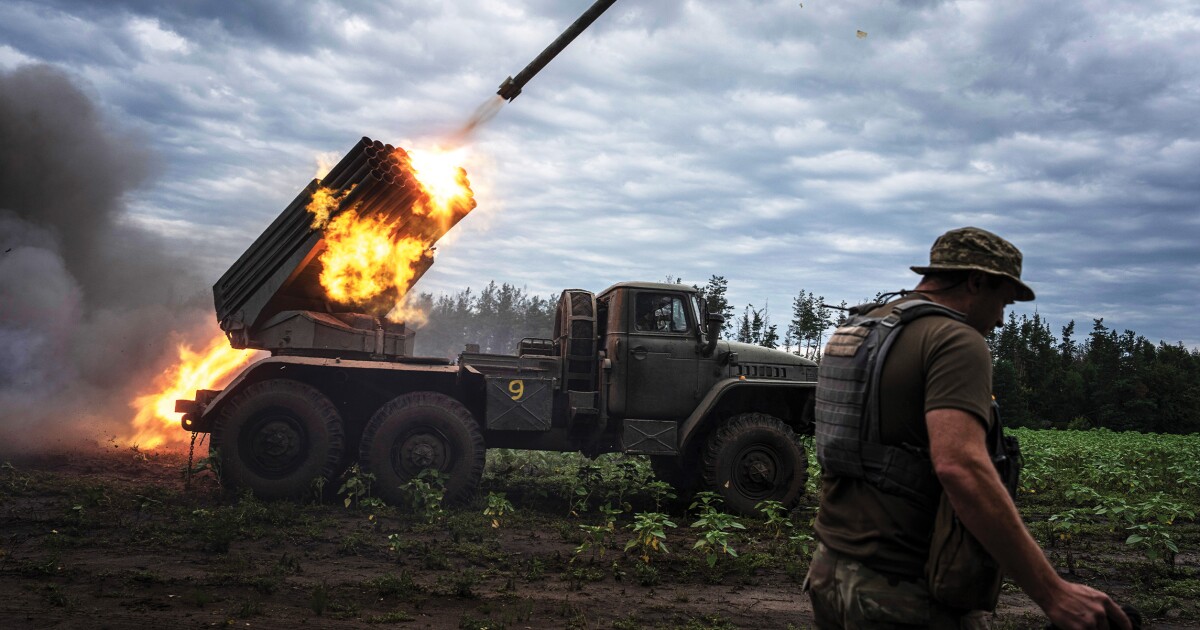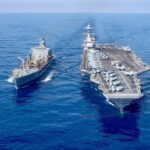

On paper, Ukraine’s David is running circles around Russia’s Goliath.
In the beginning of the war, Ukrainian defenders worshiped “St. Javelin,” the U.S.-supplied, shoulder-fired, tank-killing missile that turned hundreds of Russian tanks into smoldering hulks of roadside wreckage.
In the current phase of the war, it’s America’s HIMARS shoot-and-scoot precision rocket artillery system that’s helped Ukraine overcome Russia’s numerical advantage by taking out ammunition depots far behind the front lines, forcing Russian guns into hiding to avoid deadly accurate GPS-guided artillery fire.
In more than five months of brutal combat, the plucky Ukrainians repulsed the Russian attempt to capture the capital Kyiv and depose President Volodymyr Zelensky, inflicted morale-busting casualties on Russia’s largely conscription army, and fought the putative superpower to a virtual stalemate in the east, where Russian forces are paying heavily for every few meters they take.
The war is now at a critical inflection point, say outside experts, with only a few months of warm weather before the battle lines are frozen in place and pressure increases on Ukraine’s European allies who rely on Russian gas to keep their people from freezing.
“I don’t want to sound like a character from Game of Thrones but, yeah, winter is coming,” said Britain’s top spymaster Richard Moore at the Aspen Security Forum last month.
To maintain the flow of military, economic, and political support, Zelensky needs a dramatic battlefield triumph to show the U.S. and the world the war is winnable.
“It’s important I think to the Ukrainians themselves that they demonstrate their ability to strike back, and I think that will be very important for their continuing high morale,” said Moore. “I also think, to be honest, it will be an important reminder to the rest of Europe that this is a winnable campaign by the Ukrainians because we are about to go into a pretty tough winter.”
Putin seems to be banking on a “winter strategy” that as European countries face higher prices to heat their homes, Western resolve will buckle, and Ukraine will be forced to cut a deal on Moscow’s terms.
But Russian losses have been staggering, with estimates of war dead ranging from 15,000 to 40,000.
“We continue to see Russia failing on the battlefield, paying a high price for very little gain, and suffering domestic failures at home,” a senior military official told reporters at a Pentagon briefing. “When you look at the numbers of people that they have lost, it’s impossible to believe that they’re not having to figure out ways to replace them if they want to continue to go toe-to-toe with Ukrainians.”
That said, the Russian president has a high pain threshold, especially because he’s not the one feeling the pain.
“Vladimir Putin has no problems with driving his troops into the ground,” said Steve Hall, former CIA chief of operations, now an analyst for CNN. “There’s a long Russian history of simply using poorly armed troops, poorly trained troops, essentially for cannon fodder.”
While Ukrainian troops armed with deadly accurate HIMARS rocket launchers have fought the Russians to a virtual standstill in the eastern Donbas region, Zelensky has made no secret of his plan to liberate the southern province of Kherson, a city of 300,000 that fell to the Russians early on.
That has forced Russia to redeploy its already stretched forces from the east to reinforce the southern flanks against the expected Ukrainian counteroffensive in the coming weeks.
“If President Zelensky gets his way and he can generate several hundred thousand new fighting forces to go into that area to supplement and complement the resistance forces that have been going against the Russians,” said retired Lt. Gen. Mark Hertling, a former commander of the U.S. Army in Europe, then “you’re going to see a second front, and it’s going to cause the Russians to be put on the horns of a dilemma, about the same time that there is an inflection point, in logistics.”
Ukraine has already been cutting supply lines between Kherson and Crimea, which Russia illegally annexed in 2014, taking out bridges and rail lines, and leaving a large contingent of Russia’s 49th Army troops isolated on the west bank of the Dnipro river.
“What this war of attrition is turning into, really, is a competition over who can generate capable forces the fastest,” said retired Gen. David Petraeus. “Ukraine has not just the arsenal of democracy on its side. It has the arsenals of democracy.”
In what is the 17th shipment of arms and munitions to Ukraine, the Pentagon announced this month another $550 million worth of ammunition for the HIMARS and other artillery systems, bringing the total U.S. military assistance since the start of the war to almost $9 billion.
“They are demonstrating enormous capability now that they have the multiple-launch rockets system, the enormous additional amount of heavy artillery, and other capabilities,” Petraeus said. “And they’re putting those to very good use, picking off ammo storage sites, fuel depos, headquarters of the Russians, and then forcing those to be pulled back farther from the front lines so that it’s more difficult to support the Russian troops on the front.”
The question is how much progress Ukraine can make before the ground freezes and Russian forces dig in for the winter.
“The few months that lie ahead will show us whether or not the Ukrainians can really employ these capabilities with enormous effect and start to roll back the Russians in the south at least,” Petraeus said, “and perhaps take advantage of other locations where the Russians have had to thin their forces to reposition defenders down to the south as well.”
Jamie McIntyre is the Washington Examiner’s senior writer on defense and national security. His morning newsletter, “Jamie McIntyre’s Daily on Defense,” is free and available by email subscription at dailyondefense.com.






